I went on a 2-night 'cruise to nowhere' from Singapore. Here's what it was like, from the mandatory COVID-19 test to carrying a tracking device everywhere.
Katie Warren
- I went on a 2-night "cruise to nowhere" that started and ended in Singapore with no stops in between.
- I had to carry a tracking device called "Tracey" with me at all times on the ship.
- The experience was highly structured; almost every activity, including swimming, needed to be booked in advance.
For the last five months, Singapore has been the world capital of "cruises to nowhere," or cruises that start and end in the same place with no stops in between.
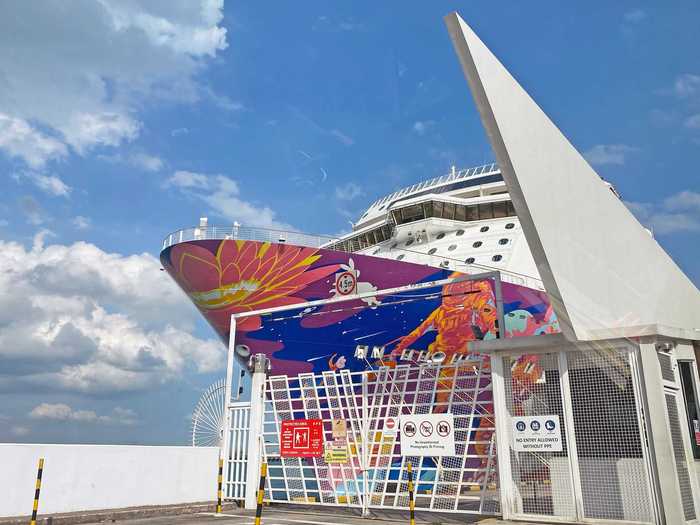
Genting Cruise Lines launched its "cruises to nowhere" in November 2020 for travel-starved Singaporeans after the city-state's borders had been essentially closed for eight months due to the pandemic.
In December, Royal Caribbean started offering similar cruises.
As of April 1, 2021, more than 150,000 people had taken a cruise to nowhere from Singapore, according to press releases from the two cruise lines. Singapore's cruises currently account for about one-third of global cruise volume, according to Annie Chang, the Singapore Tourism Board's director of cruise.
"With no ports of call, the cruise lines have focused on creating on-board experiences that appeal to locals and evoke the joy of voyaging," Chang told Insider.
As a reporter who moved to Singapore for work in December, I'd been hearing about these cruises for months. This month, it was time to see what the fuss was all about.
I booked a two-night "cruise to nowhere" aboard Genting Cruise Line's World Dream, a 1,100-foot ship operated by Dream Cruises.
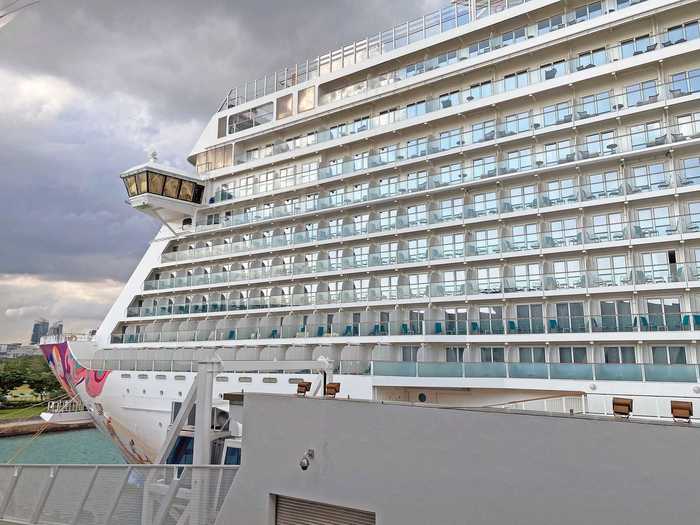
It has 18 decks and 1,686 staterooms that can accommodate up to 3,376 passengers in non-pandemic times.
During its COVID-era cruises to nowhere, however, the ship has been operating at 50% capacity with a maximum of 1,700 guests.
Before boarding the ship, every passenger had to take a rapid COVID-19 nasal swab test at a facility in the parking garage of the Marina Bay Cruise Centre. The cost of the test is included in the nightly stateroom rates.
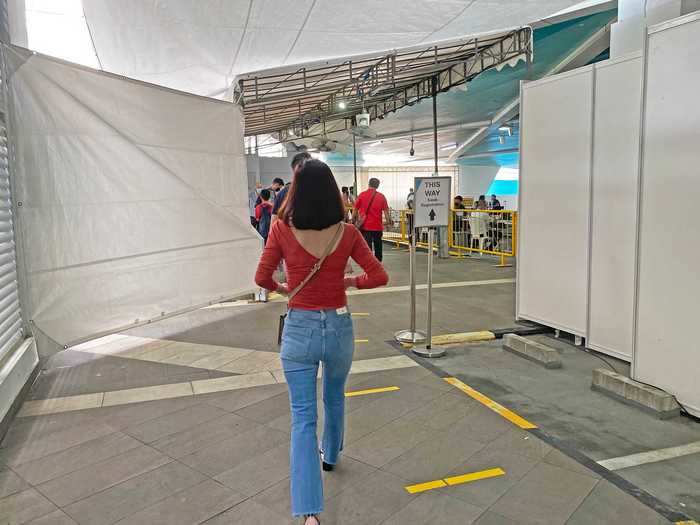
The third level of the parking garage had been partitioned into three different sections: a waiting area for the COVID-19 swab, testing stations, and an area to wait for your results after you've been swabbed.
The process was highly organized. In the first waiting area, at least 100 people were waiting in socially distanced rows of white plastic chairs.
While I waited to take my COVID-19 test, a staff member showed me a QR code to scan with my phone so I could fill out a health questionnaire that I would need to show before boarding.
After about 15 minutes, my row of chairs was called to join the queue for the nasal swabs. I checked in and headed to a private cubicle for my swab, which was was quick and painless. Thirty seconds later, I was sitting at the other waiting area awaiting my results.
I was told the results could take up to an hour, but I got mine in under 30 minutes.
After that, it was time to start the boarding process in the cruise terminal, which took about 30 minutes and a lot of walking.
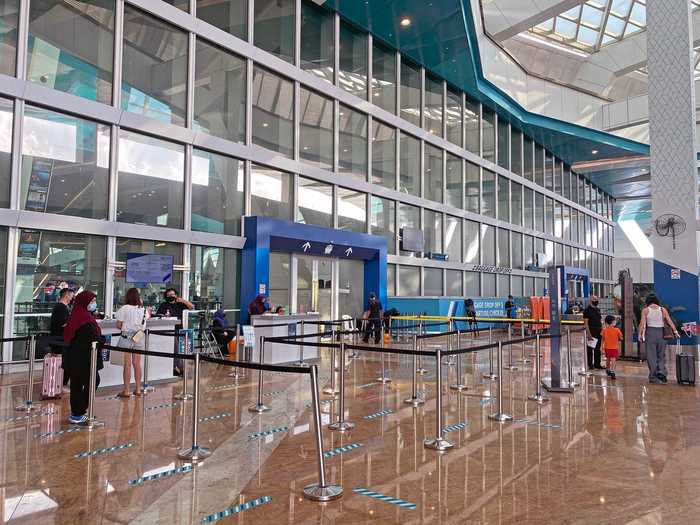
After I stepped inside, I passed through an airport-like security scan.
Then I scanned my passport at a kiosk, which spit out my room key. I waited in line for a few minutes to get my room key activated by a staff member at a counter.
Next, I was directed upstairs where I was given my personal contact-tracing device that's called - I'm not kidding - Tracey.
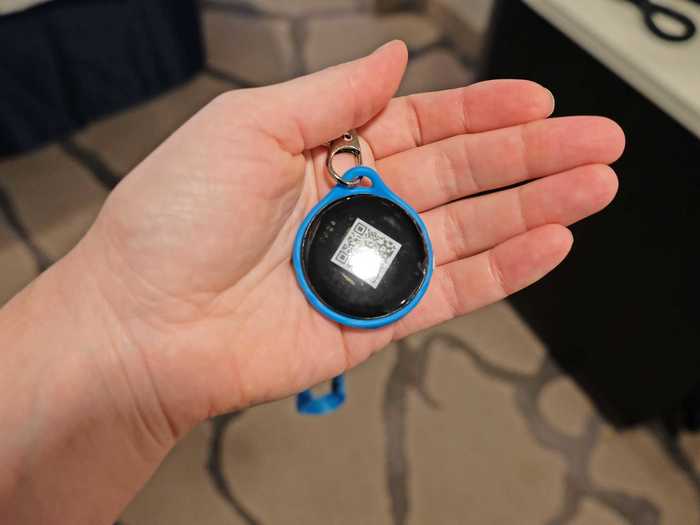
Tracey is used for contact tracing and to monitor social distancing adherence, according to the cruise line. It does not have GPS, internet, or cellular connectivity.
I was told to carry this tracking token with me at all times while on the ship.
Finally, I was ready to board the cruise ship and make my way to my stateroom.
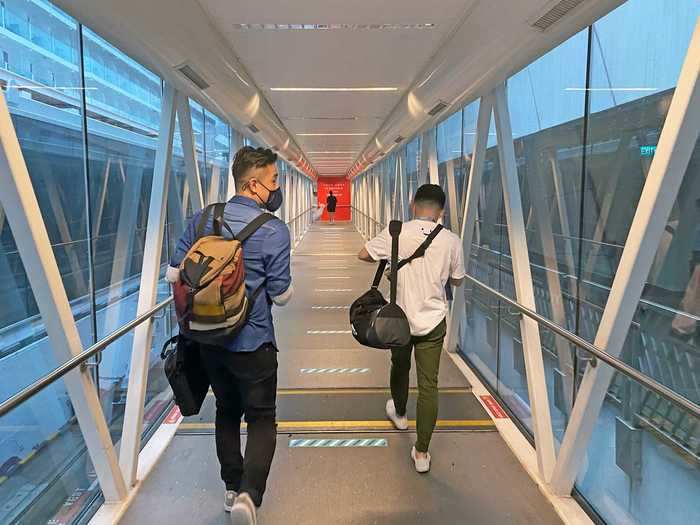
THE ACCOMMODATIONS: I got to my stateroom at about 6:20 p.m., some 1.5 hours after I arrived at the cruise center.
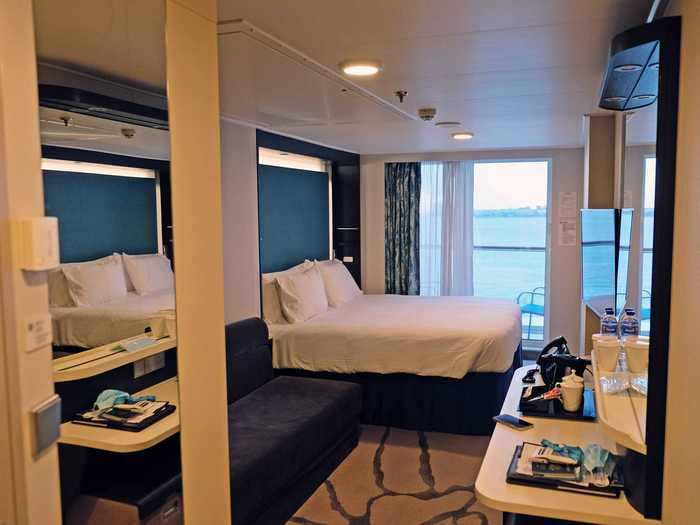
I paid 458 Singapore dollars, or about $343, for a Balcony Stateroom. The room was surprisingly spacious, with a sofa and a Queen-size bed.
I booked my room about a month before departure, by which time the most affordable rooms had already sold out.
The balcony was small but had enough space for two chairs and a small table.
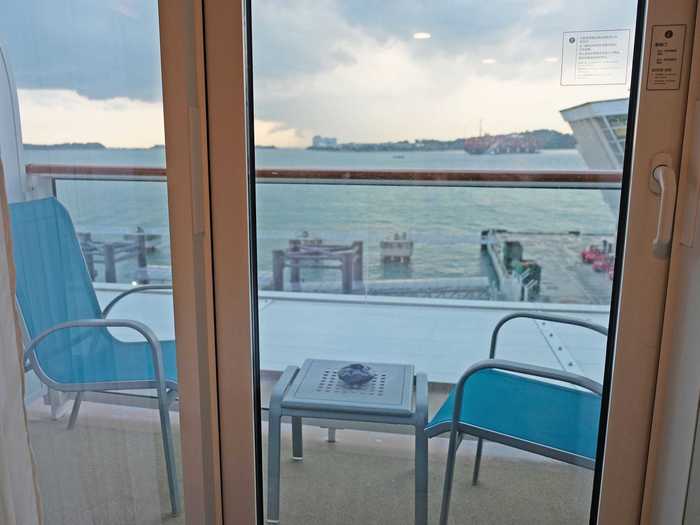
It was a major asset to have an outdoor space where I could relax without a mask on, as passengers were required to wear face masks at all times on the cruise except when eating or drinking.
I expected the bathroom to be cramped, but it actually had everything I needed: a shower, toiletries, towels, and spare toothbrushes.
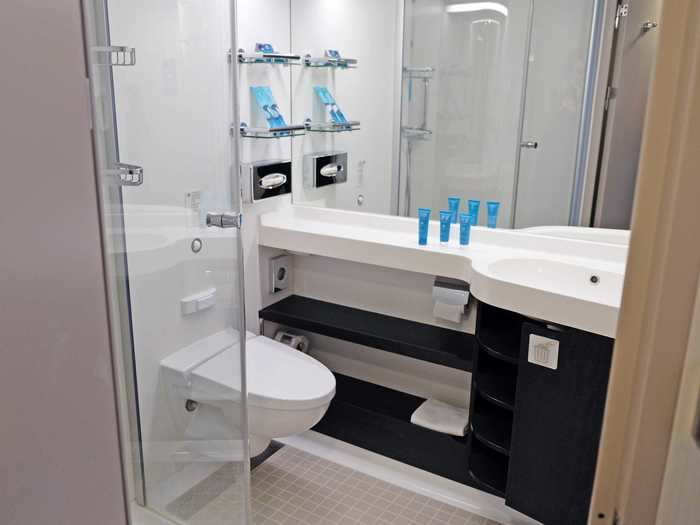
My room was also equipped with a coffee and tea station, complimentary water bottles, and a mini-fridge.
As I settled into my room, I downloaded the Dream Cruises app, where I could purchase Wi-Fi, view maps and guides of the ship, and make reservations at the paid restaurants or for shows.
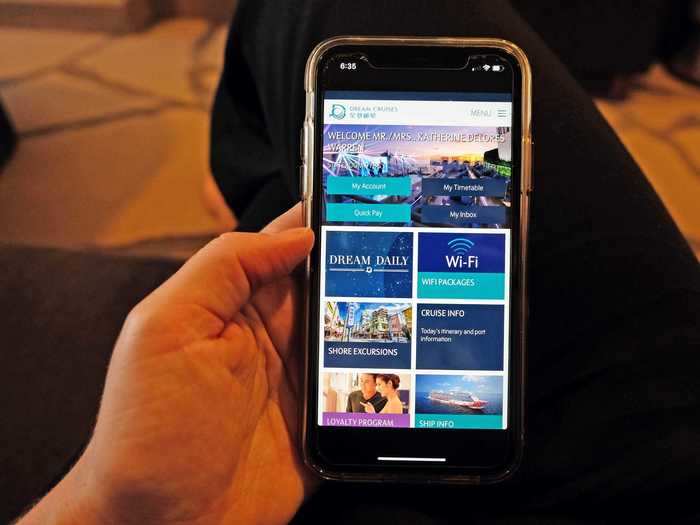
Wi-Fi was not included in the room rate. The cheapest internet package was 9 Singapore dollars, or $6.75, per night.
I opted for the "premium" package, which was SG$14, or $10.50, per night and allowed one device to use email, chat, social media, and "light media streaming." The Wi-Fi was slow and spotty.
The ship left Singapore's port at 9 p.m., about 2.5 hours after I boarded. Soon after we left, the captain announced that we'd be navigating out to the Singapore Strait and turning east into the South China Sea.
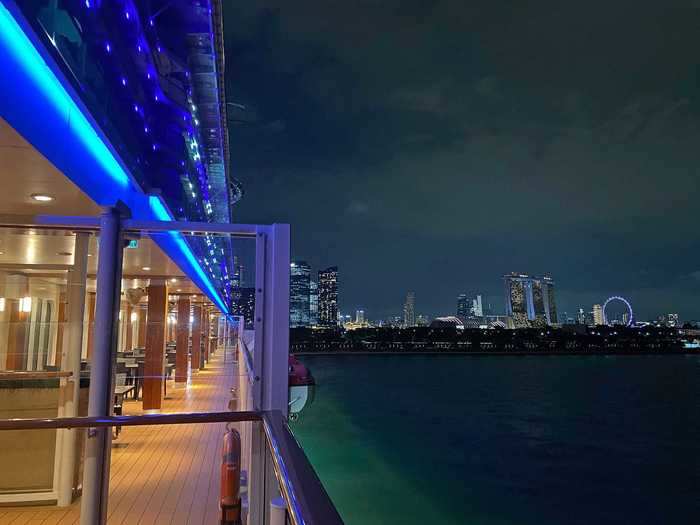
We would cruise around the South China Sea near Malaysia for about 36 hours before returning to Singapore by 9 a.m. on Friday.
COVID-19 RESTRICTIONS:Coronavirus safety measures were on full display throughout the ship.
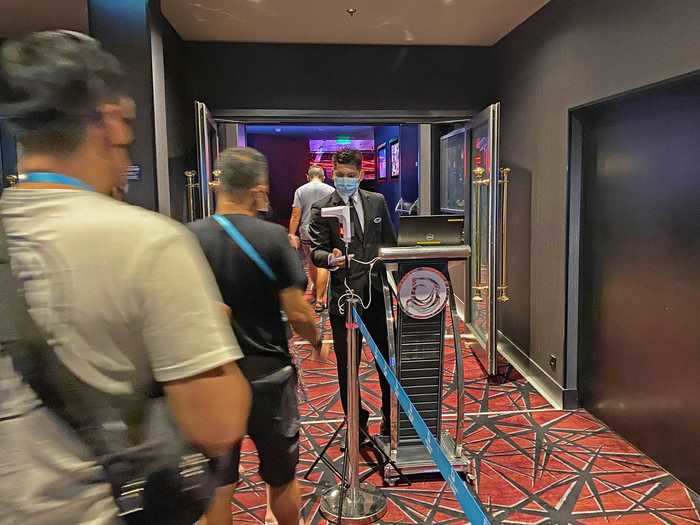
In addition to carrying the Tracey tracking device everywhere on the ship, passengers were required to tap in their room keys and get our temperatures checked at various checkpoints as we passed through the ship.
Staff members were standing by throughout the ship to remind passengers to adhere to social distancing measures.
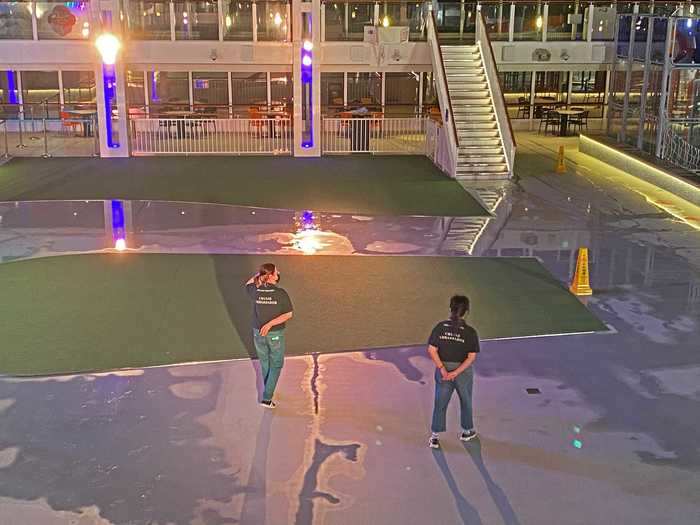
The ship's reduced capacity often made parts of it feel strangely empty.
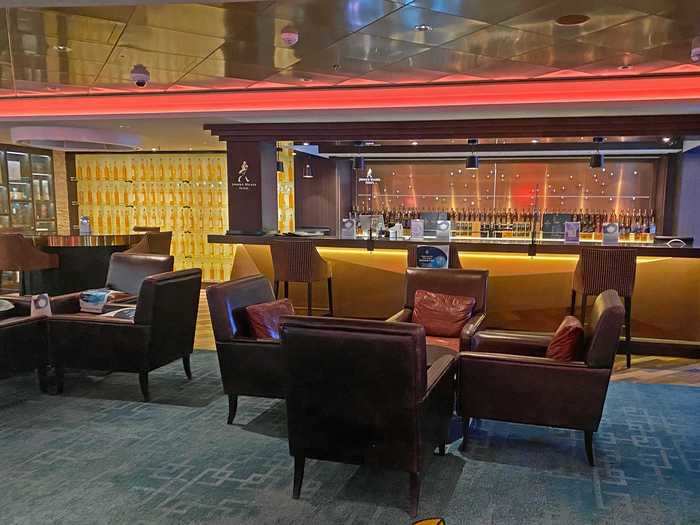
The pool closed at 9 p.m. And in accordance with Singapore's COVID-19 restrictions, alcohol stopped being served at 10:00 p.m. and alcoholic drinks were taken away promptly at 10:30 even if unfinished.
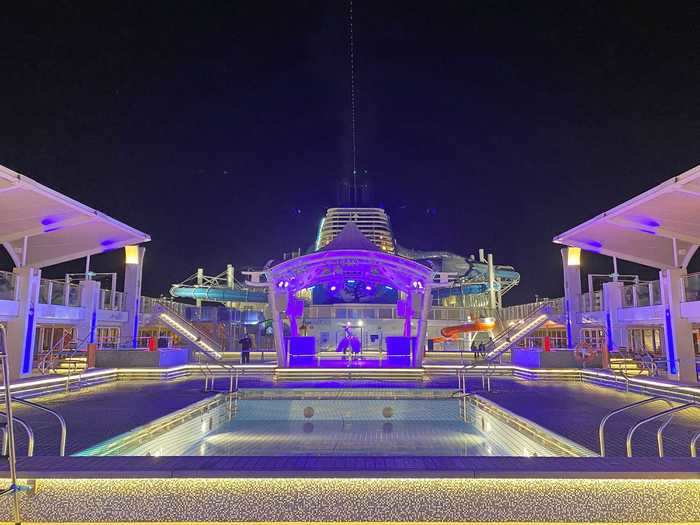
Singapore's strict COVID-19 restrictions have led to near-elimination of the virus in the community, and I've appreciated the safety I feel living in a country where the pandemic is taken so seriously.
Still, the measures made the cruising experience feel more structured, supervised, and sterile than I had expected.
THE FOOD:My first meal on board World Dream was at one of the free restaurants, Dream Dining Room. My experience there served as my first hint that nearly everything on the cruise needed to be booked well in advance.
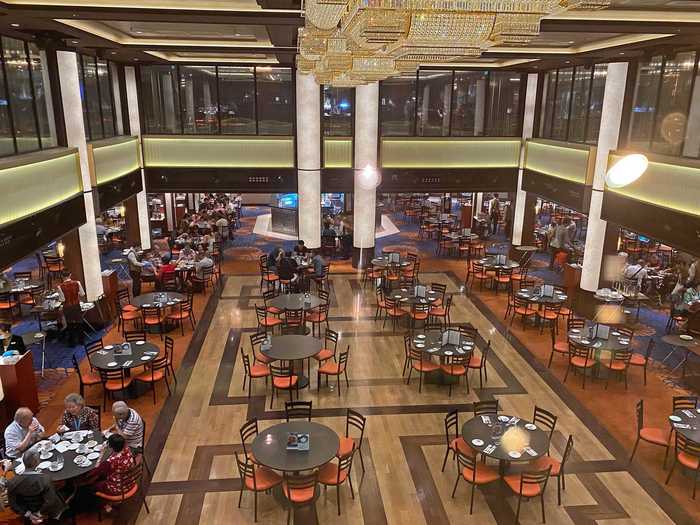
Dream Dining Room is a two-level restaurant that offers a Chinese menu on the upper level and a Western menu on the lower level.
My first attempt at dinner around 7:15 p.m. was unsuccessful: The hostess told me there were no tables until 8:45 p.m. so I needed to take a number and come back later.
To kill some time before dinner, I got a cocktail from a bar called Mixt, where I was the only customer.
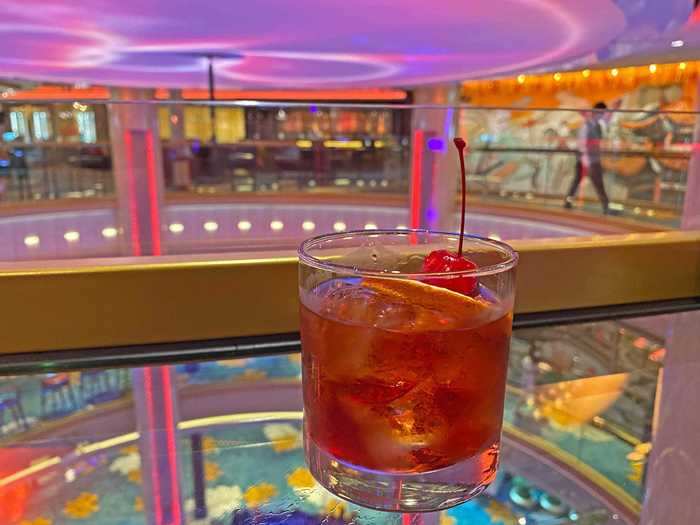
I had tried two other bars first — the outdoor Sun Deck Bar and the indoor Bubble Champagne Bar — but both appeared to be closed.
Alcoholic drinks were not included in the cruise price, but there were multiple drinks packages available to buy starting at SG$50, or about $37.50.
Back at the restaurant at 8:45 p.m., I opted for the Chinese menu.
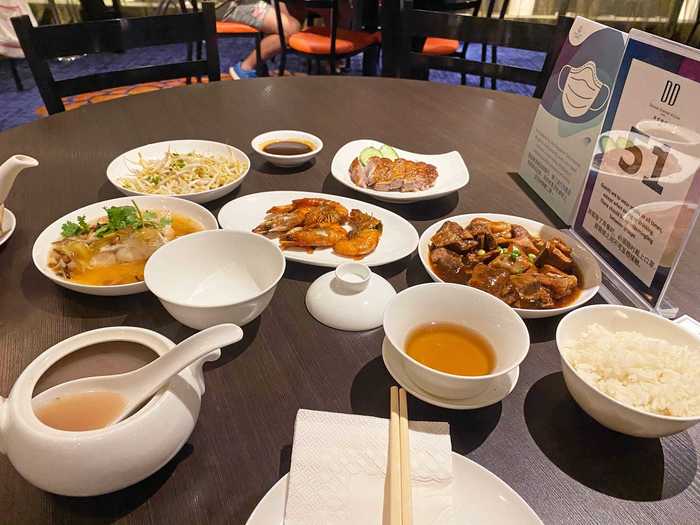
It was a set menu, so I didn't have to make any decisions. In fact, I never even saw the menu because I didn't realize it was posted outside the restaurant.
I was pleasantly surprised by the variety of food that was brought to me. There was an oxtail soup, roast duck, a Thai white fish, prawns, mung bean sprouts, and a sweet red bean soup with lotus seeds for dessert. It was all quite tasty.
For breakfast and lunch the next day, I checked out the free Lido buffet, which served a variety of international cuisine with Halal and vegetarian options.
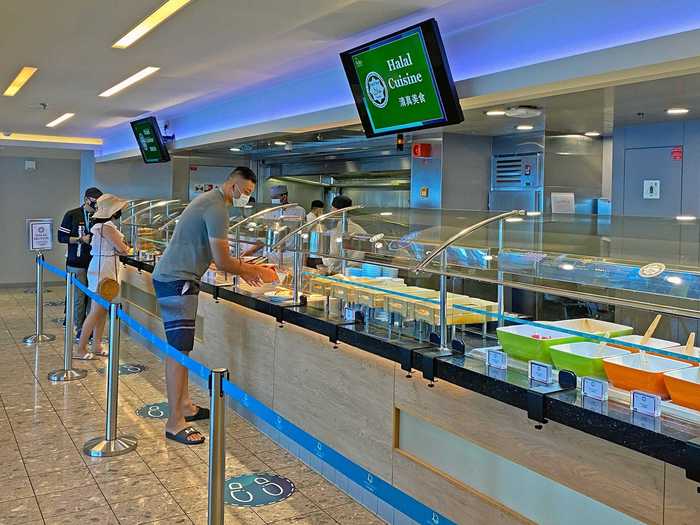
For breakfast, there were pastries, oatmeal, cold cuts, eggs, nasi lemak, and beef rendang. For lunch, there were salads, noodles, and stir fries. The Western options included pizza, pasta, and french fries.
Rather than passengers taking food themselves, cruise staff served you anything you asked for.
In addition to the Lido buffet and the free Dream Dining Room, World Dream had 11 other cafes and restaurants where passengers could eat for an additional cost.
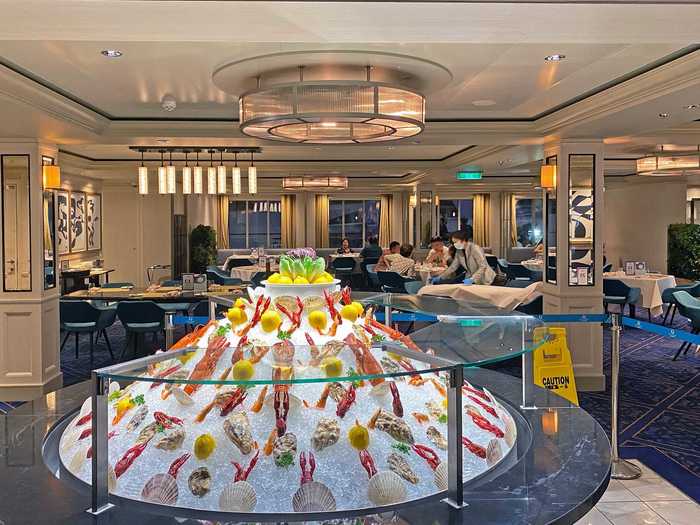
At Prime Steakhouse, guests could order a Black Angus Rib Eye or a Filet Mignon.
There was also a hot pot restaurant, a sushi restaurant, an upscale Chinese restaurant, and a couple of casual cafés.
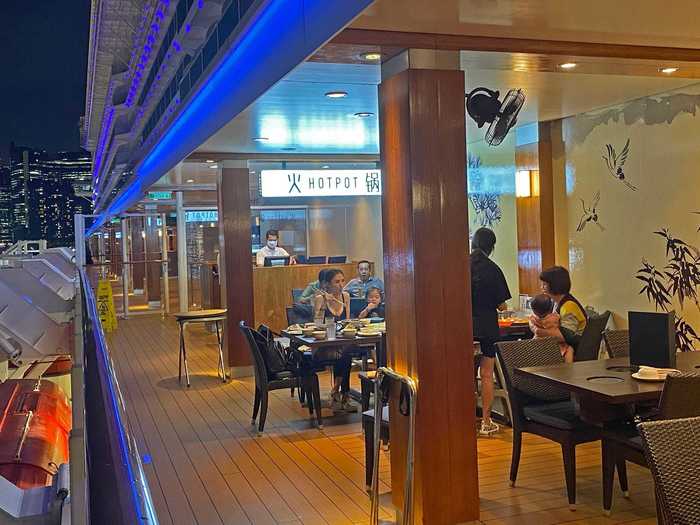
While some passengers appeared to be eating in the paid restaurants, the majority of guests seemed to opt for the free Dream Dining Room.
The Western menu in particular was very popular, a staff member told me.
ACTIVITIES AND ENTERTAINMENT:World Dream has no shortage of activities on offer. But COVID-19 capacity restrictions meant that getting into some of them, like the pool, was no easy task.

The centerpiece of the outdoor activities was Zouk Beach Club, which had four Jacuzzi's and a swimming pool.
But capacity was limited and time slots needed to be booked in advance — and I didn't realize just how far in advance.
On Thursday, the only full day of the cruise, I approached the pool desk at 10:30 a.m. to book a slot for later on the day. But the pool was already fully booked for the remainder of the cruise. This meant I didn't get into the pool once during the entirety of the cruise.
Other outdoor activities included a waterslide park with six waterslides.
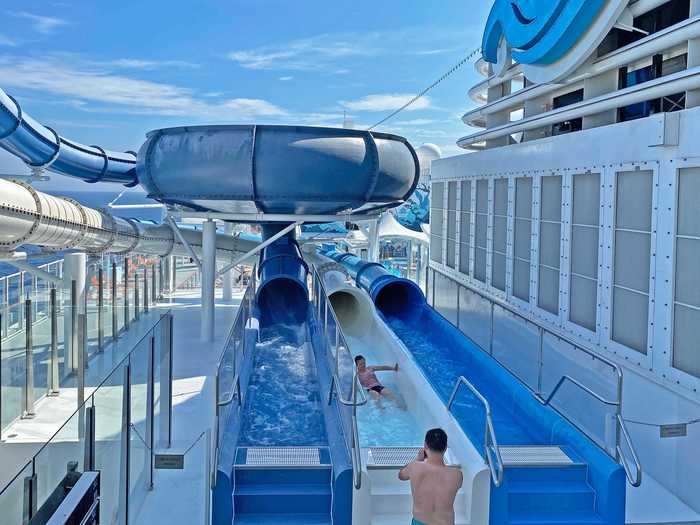
The children's play area, which had a playground and its own shallow swimming pool, was often full of children, making it one of the few areas of the ship that felt "normal."
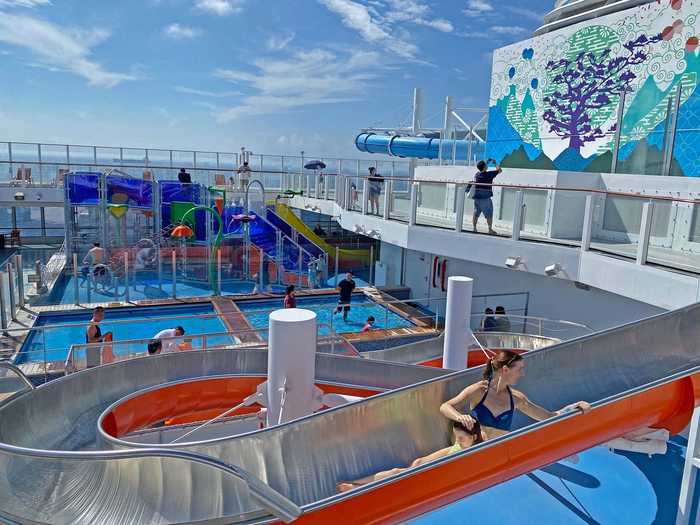
For adventurous passengers, there was a zip-line course 18 decks above the water.
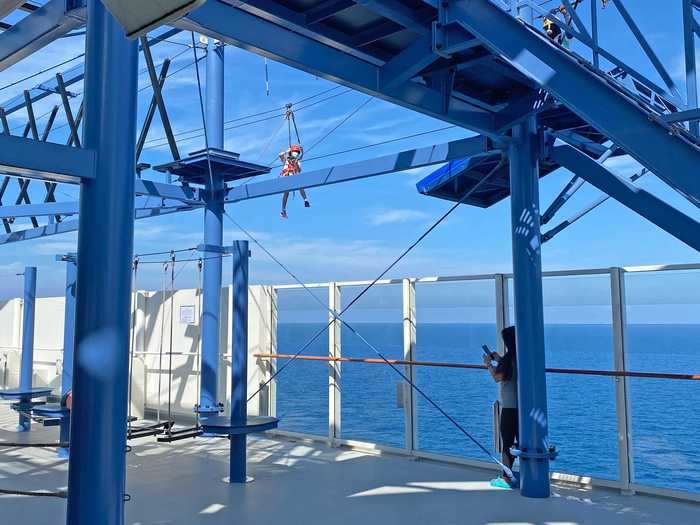
Other outdoor activities included a rock-climbing wall and a mini-golf course.
As for indoors, bingo was a popular activity throughout the cruise.
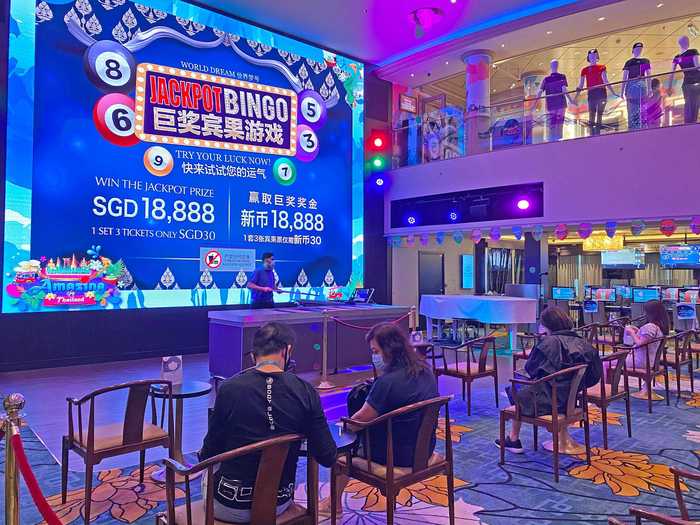
There were several arcade areas scattered throughout the ship. I saw very few people in any of them.
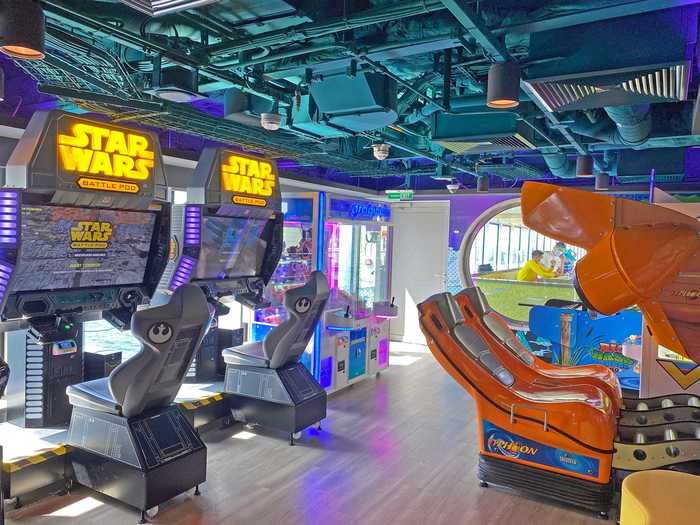
Apart from eating, the most popular cruise activity by far seemed to be gambling. Two of World Dream's decks featured gaming areas operated by Genting's casino franchise, Resorts World.
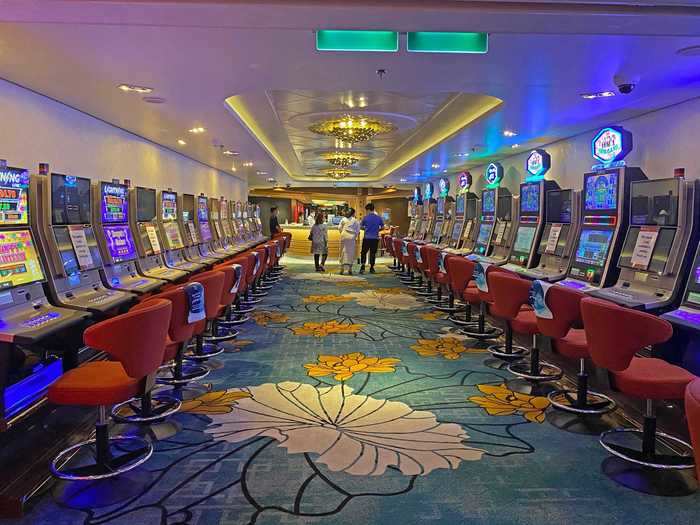
When the gaming areas opened in the evening, they were one of the buzziest spots on the ship.
Every other machine was blocked off for social distancing, and staff members discouraged lingering in the area if you were not playing.
Other entertainment included free shows in the Zodiac theater. There was Faith, a theatrical dance performance, and Vision, an interactive performance by illusionist Vincent Vignaud.

Tickets sold out quickly, but I managed to reserve a seat for an evening show of Vision.
The 45-minute show was entertaining — particularly when the illusionist involved the audience — but often underwhelming when some of the tricks were unsuccessful.
World Dream has 13 other bars and lounges, from cocktail bars to a Champagne bar. Mixt, a cocktail lounge, was deserted whenever I passed by it throughout the cruise.
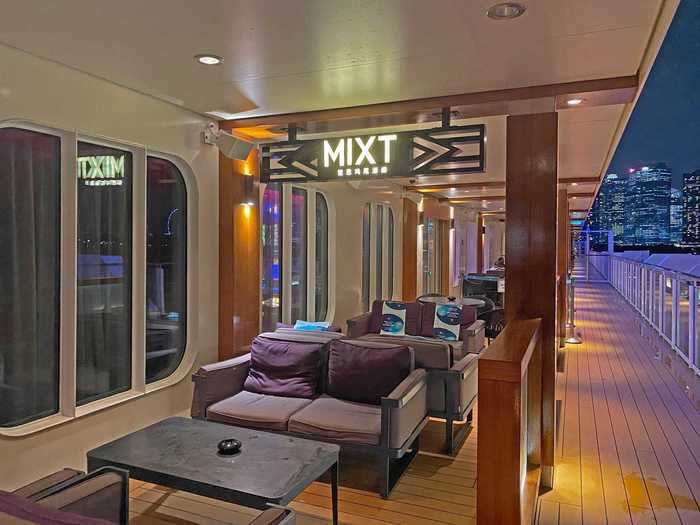
Several of the bars, including Bubbles Champagne Bar and the Johnnie Walker House, were open - though you wouldn't know if from looking at them, as they were devoid of staff and passengers throughout the cruise.
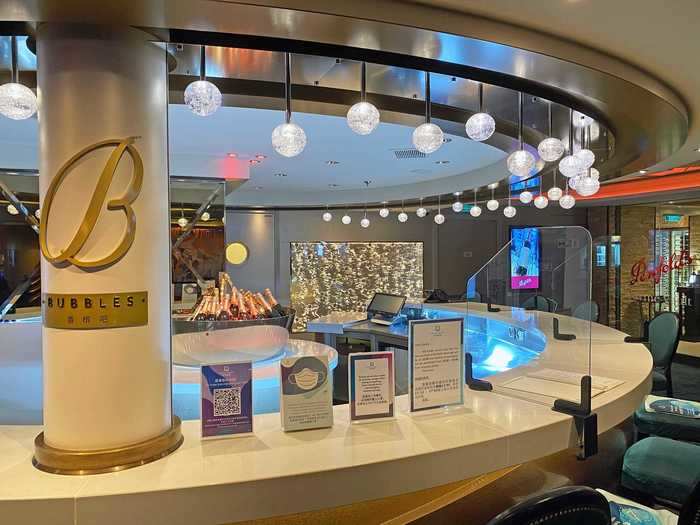
My favorite was the outdoor Sun Deck Bar, where you could enjoy a cold beer along with a sea breeze.
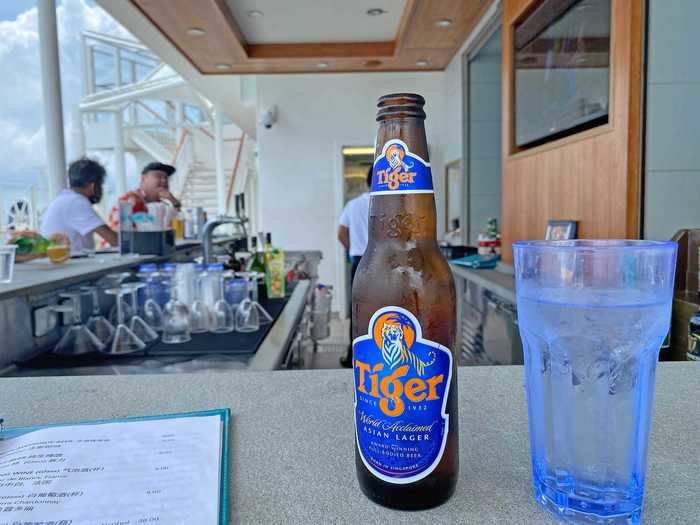
The atmosphere also tended to be livelier there, in contrast with the other bars.
DISEMBARKATION:World Dream started disembarking passengers level by level at 9:30 on Friday morning. Overall, it was a much quicker and easier process than boarding.
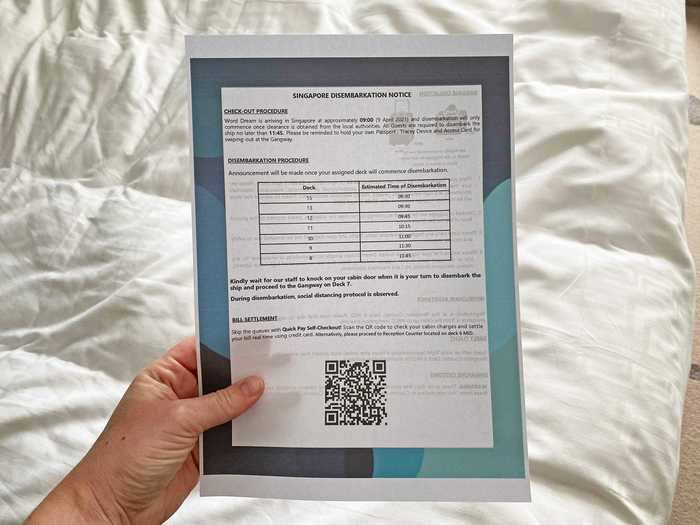
Housekeeping had left a disembarkation notice on my bed the afternoon prior informing me of my time slot.
I was on the 9th deck, so I was scheduled to disembark at 11:30 a.m. However, I got a knock at my door about 45 minutes ahead of schedule at 10:45.
The disembarkation process was pretty straightforward.
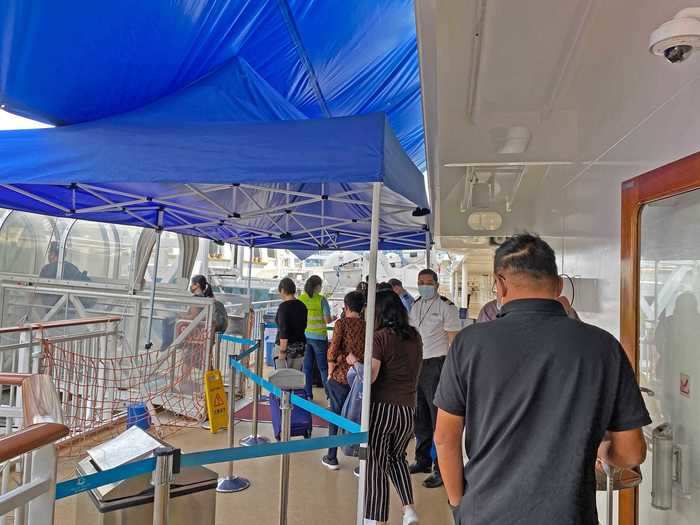
On the way off the ship, I tapped out with my room card. In the cruise center, I turned in my Tracey device, scanned my passport at immigration, and went through another airport-style security scan.
I was in a car home a little after 11:00 a.m., well ahead of my scheduled disembarkation time.
I don't expect I'll take another cruise to nowhere - though I also realize I'm likely not the target audience for a cruise to nowhere in the first place.
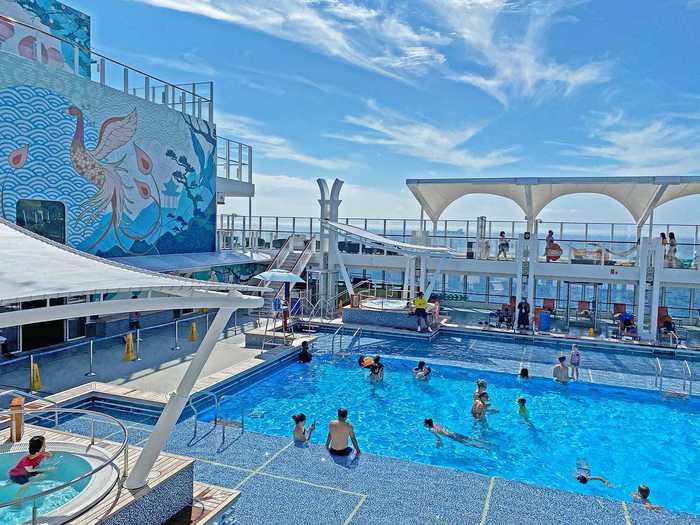
The whole experience was, of course, heavily influenced by the COVID-19 restrictions. The safety measures are what made the experience possible in the first place — but they also made the experience so structured that it wasn't much fun. Mingling with other people was discouraged, the evenings ended early (except in the casinos), and capacity restrictions made it difficult to see shows or get a spot at the pool.
Still, as someone who only moved to Singapore four months ago, I realize I'm not necessarily the target customer for a cruise to nowhere.
Every other passenger I spoke to on the cruise said they hadn't left the city-state for over a year since before the pandemic began. They booked the cruise because it was a great deal — some people paid as little as 99 Singapore dollars, or about $75, per night — and because they were itching for even the smallest form of travel.
And for most of them, the cruise scratched that itch, even if it it did go "nowhere."
READ MORE ARTICLES ON
Popular Right Now
Popular Keywords
Advertisement